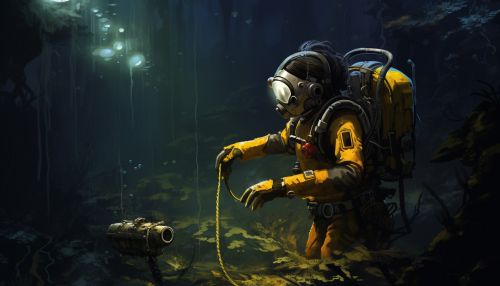Advances in Underwater Acoustic Communication
Introduction
Underwater acoustic communication is a pivotal aspect of underwater acoustics, a branch of acoustics that studies the propagation of sound in water and the interaction of the mechanical waves that constitute sound with the water, its contents, and its boundaries. The recent years have witnessed significant advances in this field, driven by the increasing need for reliable underwater communication in various applications such as underwater exploration, marine biology research, and naval operations.


History and Background
The history of underwater acoustic communication dates back to the early 20th century when the first underwater telegraphy systems were developed. However, the real breakthrough came with the advent of sonar (Sound Navigation And Ranging) during the World War II. Since then, the field has seen continuous growth and development, with the introduction of more sophisticated and efficient communication techniques and technologies.
Underwater Acoustic Channel
The underwater acoustic channel is a challenging environment for communication due to several factors such as signal attenuation, multipath propagation, Doppler spread, and ambient noise. These factors significantly affect the performance of underwater acoustic communication systems and pose considerable challenges to their design and operation.
Modulation Techniques
Various modulation techniques have been developed for underwater acoustic communication, including amplitude modulation (AM), frequency modulation (FM), phase modulation (PM), and more recently, digital modulation techniques such as quadrature amplitude modulation (QAM), phase-shift keying (PSK), and orthogonal frequency-division multiplexing (OFDM). These techniques offer different trade-offs between data rate, power efficiency, and robustness to channel impairments.
Error Control Coding
Error control coding is another crucial aspect of underwater acoustic communication. It involves adding redundancy to the transmitted data to enable the receiver to detect and correct errors caused by channel impairments. Various error control coding techniques have been developed, including convolutional coding, Reed-Solomon coding, and more recently, turbo coding and low-density parity-check (LDPC) coding.
Multiple Access Techniques
Multiple access techniques are used to allow multiple users to share the same underwater acoustic channel. These techniques include frequency division multiple access (FDMA), time division multiple access (TDMA), code division multiple access (CDMA), and more recently, orthogonal frequency-division multiple access (OFDMA) and multi-user MIMO (MU-MIMO).
Recent Advances
Recent advances in underwater acoustic communication include the development of adaptive modulation and coding techniques, MIMO techniques, cooperative communication techniques, and underwater acoustic sensor networks. These advances have significantly improved the performance and reliability of underwater acoustic communication systems and opened up new possibilities for their application.
Future Directions
Future directions in underwater acoustic communication include the development of more efficient modulation and coding techniques, the integration of underwater acoustic communication with other communication technologies, and the exploration of new applications in areas such as underwater robotics, marine biology research, and environmental monitoring.
